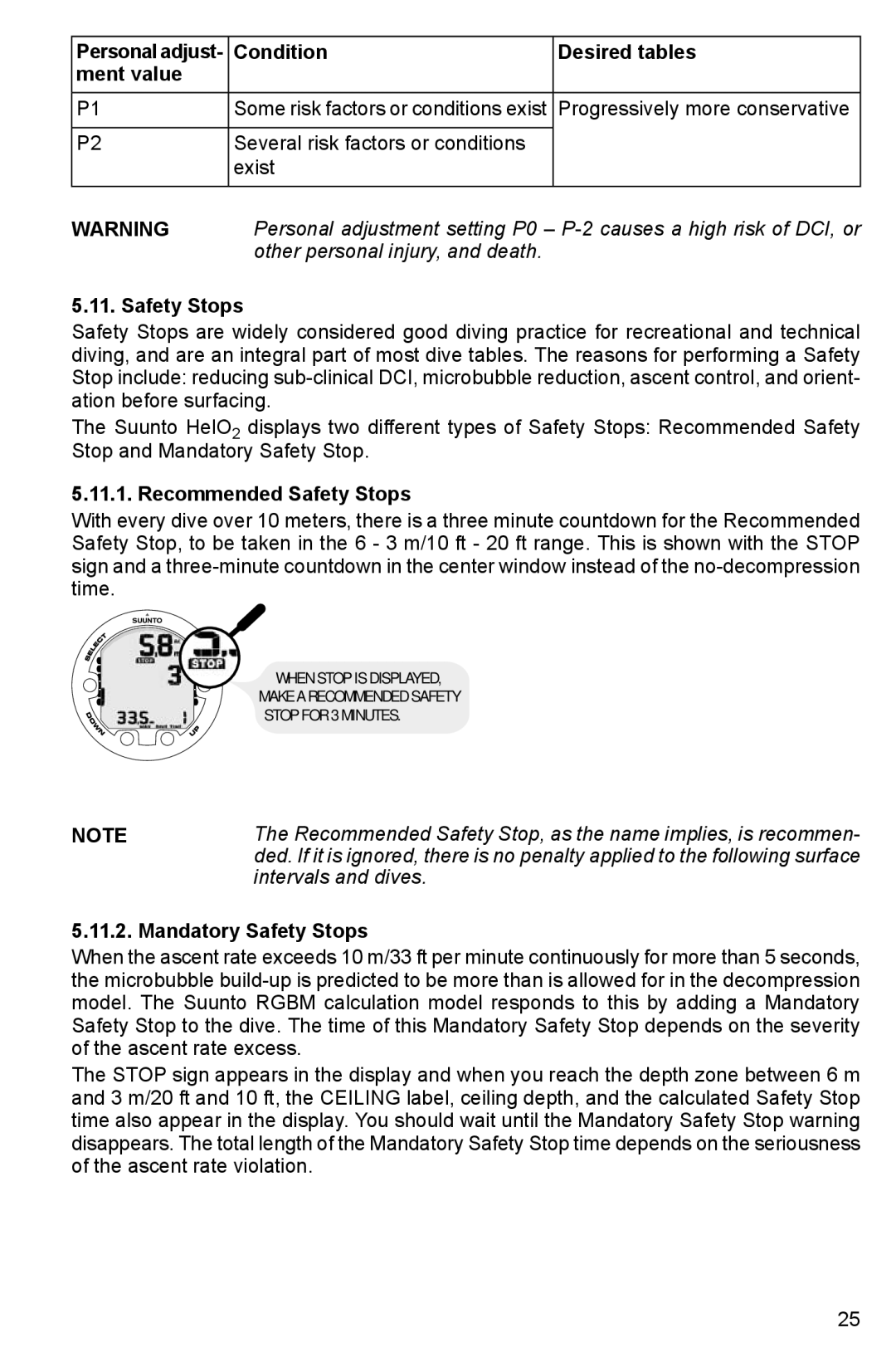
Personal adjust- Condition | Desired tables | |
ment value |
|
|
P1 | Some risk factors or conditions exist | Progressively more conservative |
P2 | Several risk factors or conditions |
|
| exist |
|
WARNING | Personal adjustment setting P0 – | |
| other personal injury, and death. |
|
5.11. Safety Stops
Safety Stops are widely considered good diving practice for recreational and technical diving, and are an integral part of most dive tables. The reasons for performing a Safety Stop include: reducing
The Suunto HelO2 displays two different types of Safety Stops: Recommended Safety Stop and Mandatory Safety Stop.
5.11.1. Recommended Safety Stops
With every dive over 10 meters, there is a three minute countdown for the Recommended Safety Stop, to be taken in the 6 - 3 m/10 ft - 20 ft range. This is shown with the STOP sign and a
WHEN STOP IS DISPLAYED,
MAKE A RECOMMENDED SAFETY
STOP FOR 3 MINUTES.
NOTE | The Recommended Safety Stop, as the name implies, is recommen- |
| ded. If it is ignored, there is no penalty applied to the following surface |
| intervals and dives. |
5.11.2. Mandatory Safety Stops
When the ascent rate exceeds 10 m/33 ft per minute continuously for more than 5 seconds, the microbubble
The STOP sign appears in the display and when you reach the depth zone between 6 m and 3 m/20 ft and 10 ft, the CEILING label, ceiling depth, and the calculated Safety Stop time also appear in the display. You should wait until the Mandatory Safety Stop warning disappears. The total length of the Mandatory Safety Stop time depends on the seriousness of the ascent rate violation.
25
